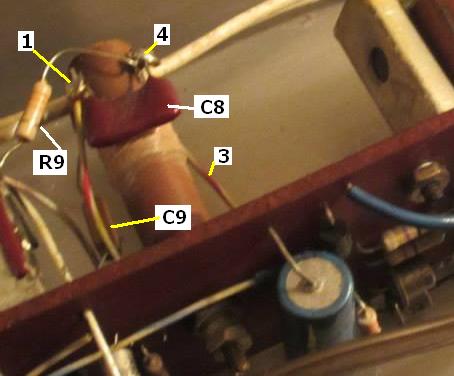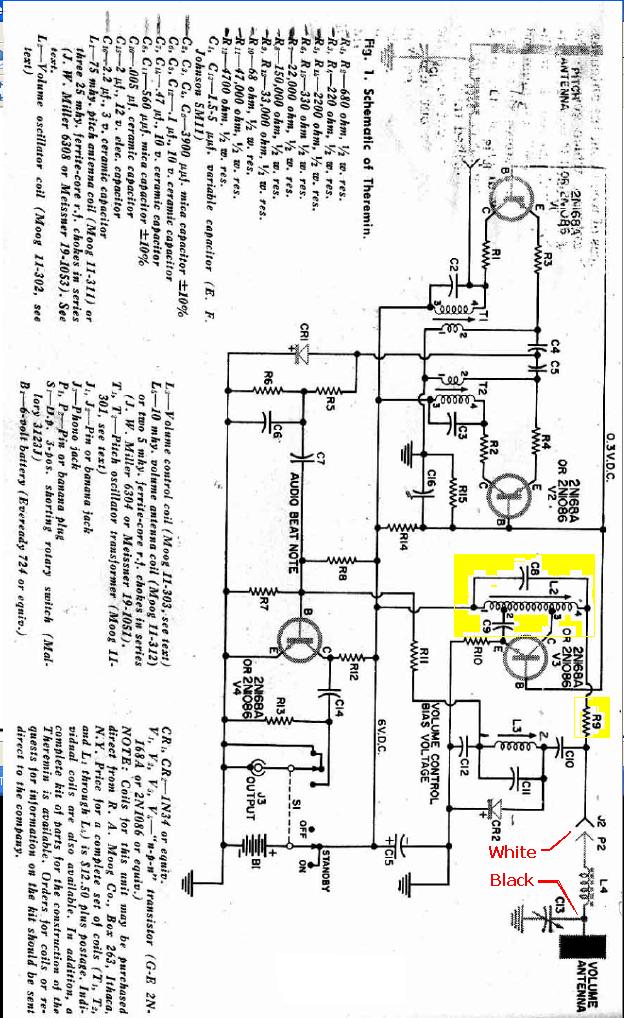Help, please...
Doing final reassembly of this Theremin, one of the wires to the coil attached to the volume plate became disconnected from the coil. When I carefully (I thought) peeled off the electrical tape insulating and reinforcing the coil connections to locate the end of the winding to reconnect, the other wire came off. I now have a coil with very fine wiring and no indications as to where the winding ends are that I can reconnect to the wires from the board. Below is a picture of the coil as it existed before I initially disassembled the device.
I figure the proverbial snowball in Hell has a better chance of restoring this coil to function than I have at this point, so the questions I have are these:
(1) Has anyone reading this ever performed this kind of restorative surgery such that s/he would know what to do (even to the point of doing it if I sent the coil)?
(2) If such an effort is not worth attempting, is it possible to suss out the likely inductance value and other characteristics of this coil so that I could try to find a replacement?
(3) Assuming option (2) is viable and my best shot at getting this working again, and the coil properties can be determined or at least estimated, where is the best place to look for a replacement?
Thanks in advance for your time and any help you can provide. I really want to get this instrument functioning.
Edit: I am going to try to post picture that will show the original coil in situ, including the connections to the rest of the circuitry.






